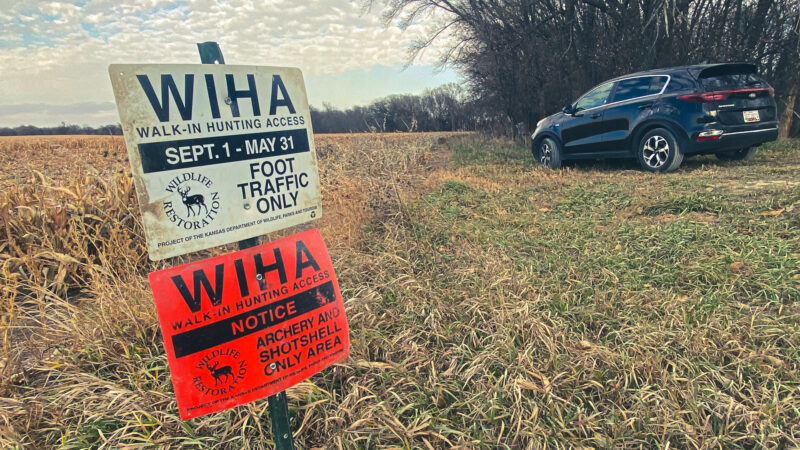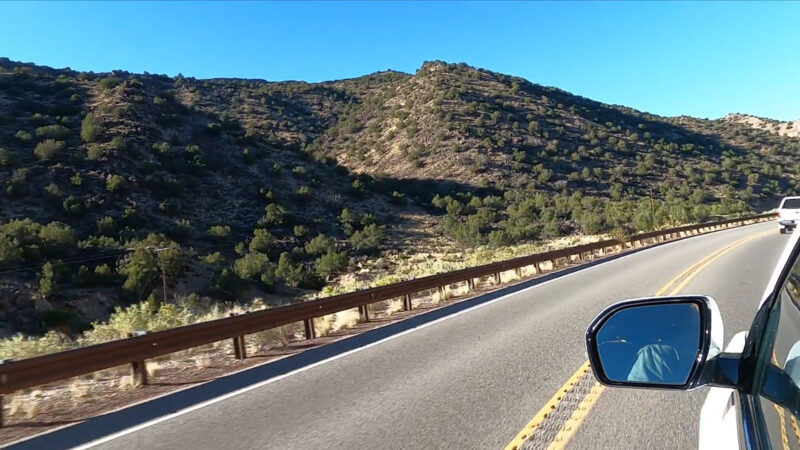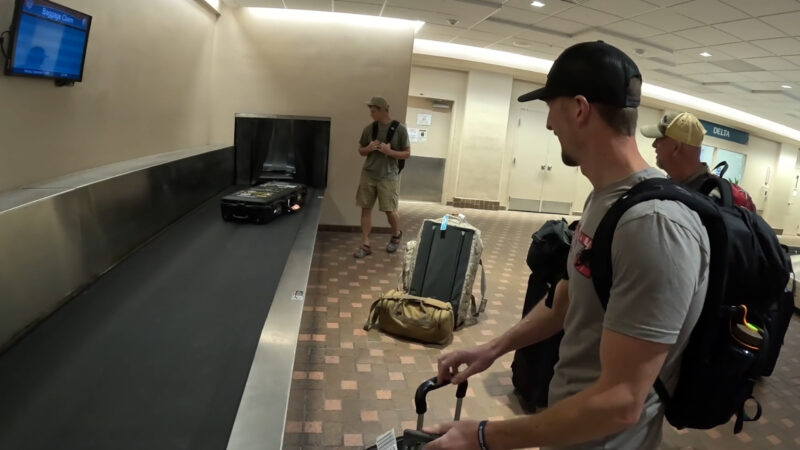We live in a busy world. Our time is valuable, and every second counts. I have friends and family who schedule their days and weeks right down to the minute, and they plan their hunting trips the same way.
When booking a destination hunt, there’s no question about it – they’re flying. In fact, they wouldn’t even think of driving. They want to get there and back as fast as possible, no time wasted on travel.
But is flying really the quickest way to get to your next hunt? More importantly, is it the best way? Or are there times when driving is truly the better option?

Flying Versus Driving: A Case Study
A number of years ago, I booked a mountain lion hunt in Colorado. I live in Pennsylvania, so it would’ve been a 24-hour drive. Flying seemed like the best option.
However, after standing in lines to check luggage, paying extra fees for luggage, going through security, having my flight delayed, and hustling to make the connecting flight, I got off the plane in Grand Junction more than a little stressed out.
To make matters worse, the weather was unseasonably warm with very little snow – poor conditions for tracking mountain lions. Still, we hunted our tails off for five days.
When the hunt was over, I was back at the airport for the flight home, dealing with more lines, more luggage issues, and no mountain lion for my efforts. I came home feeling dejected and worn out. It only emphasized something I already knew about myself – I don’t like crowded public spaces.
Fortunately, the outfitter I hunted with in Colorado had a return policy. If unsuccessful on any mountain lion hunt, you could return the following year for half price. So I did, but this time I drove. I broke the drive up into two 12-hour days, and although I was a little road-weary upon arrival, I felt ready to hunt once I finally got there.
The weather was better the second time around, too, and I got my mountain lion. Instead of leaving right away, the guide took me out the next day to try to call in a bobcat, which we did, and I ended up taking two trophies home. Even though I left a day earlier than planned, that gave me plenty of time for various stops to sightsee and experience places far from home.
The drive was more relaxing and enjoyable. Not just because I’d had a successful hunt, but because I could do it at my own pace. I got back feeling happy and refreshed.

Pros and Cons of Flying
Although the first mountain lion hunt was a stressful experience, there are times when driving just isn’t an option, and you have to book a flight. Indeed, flying is much quicker, a major timesaver despite any airport delays. Also, some folks just don’t enjoy long car rides alone. If you’re crunched for time, or can’t handle long drives, then flying is definitely the ideal choice.
However, what happens if you’re successful on a moose hunt and want to bring home the antlers, cape, and hundreds of pounds of some of the best-tasting wild game you’ll ever eat? Due to baggage restrictions and size and weight limits, there’s no way you’ll be taking that all on the flight.
The only option is to have it shipped – and let me tell you, it’s not cheap to ship bulky, heavy items like these. There will be processing fees, crating fees, shipping fees, extra shipping fees, and more shipping fees!

On my last moose hunt to Newfoundland, I brought home about 250 pounds of meat packed into three big coolers. The processor quoted $1,500 to cut and wrap, freeze, crate, and ship the meat.
Fortunately, I drove to that hunt, and although it was a grueling 36-hour marathon, it was a more economical way to get the meat home to my freezer. The processor charged $200 to cut, wrap, and flash-freeze the meat, which stayed frozen in the coolers until I got home three days later.
Also, if flying, consider this: airlines lose approximately 2 million pieces of luggage every year. Overall, airlines are thought to have a mishandled luggage rate of 7.5%. That may not seem like a lot, but would you really trust them with your prize whitetail antlers? How about with your bow?

Pros and Cons of Driving
The main downfall of driving is, well, the drive. Not everyone is cut out for long hauls cross country. Whenever possible, I have driven to hunts, and some road trips have gone better than others.
Vehicle problems are always a possibility. Fuel costs keep going up. And if you’re not traveling with a buddy, there’s the long hours behind the wheel, just you, the road, and the radio. These are all serious cons to driving to your next hunt and should absolutely be considered.
Driving to Newfoundland by myself was no easy feat. I frequently pulled over for cat naps, snacks, and drinks, which added to my travel time. Fortunately, I’m self-employed and could take my time getting there. Not everyone has that option or has enough vacation days from work to pull that off. However, there are many benefits to driving.

Despite rising fuel costs and hotel rooms (if traveling multiple days), the cost is still about equal to that of flying to most destinations in the continental U.S. For example, the drive to Grand Junction, CO, was 1,700 miles.
Considering that my truck got 21 miles per gallon, the cost of one night in a hotel room each way, and meals along the way, I still made the roundtrip for less than $1,000. A quick search online tells me that the cheapest flights from Pittsburgh to Grand Junction fall in the $600-1,000 range.
However, that doesn’t include any extra baggage costs, car rental at the destination (if needed), or airport parking for the duration of the trip if I can’t have somebody drop me off and pick me up afterwards.
Yes, you’ll get there faster by flying, but consider the positives of driving:
- My bow will be safe and secure in the cab of my pickup. No worries about damaged sights, limbs, or other parts due to airline employee negligence.
- I won’t have to pay extra baggage fees if I decide to pack more gear than I actually need (a chronic habit of mine). But also, no size or weight restrictions allow me to take enough clothing and other gear to be comfortable on the hunt.
- After a successful hunt, I can transport all meat, antlers, and capes home with me; no exorbitant shipping costs.
- If successful early in the hunt, I can leave early, take more time getting home, or stay to pursue other opportunities, such as trying to call in a bobcat like I did in Colorado.
- I can take my time and make it an adventure. For me, this is the biggest benefit, feeling connected to the land I’m passing through, stopping along the way to explore interesting sites and engage with people. I also enjoy the time alone behind the wheel and have come to enjoy listening to audio books and podcasts while I drive.

Economical Travel Options
As mentioned, there are a number of costs associated with traveling to a destination hunt. When flying to your destination, you have few options for ways to trim some of those costs. You’re at the mercy of the airline for your tickets, baggage, parking, etc, and at the mercy of the meat processor or taxidermist for shipping antlers, hides, and meat home. However, driving does provide some flexibility and an opportunity to do things cheaper.

Here are some ways to cut costs while driving to your next destination hunt:
- Take a buddy. Not only will you have someone to split fuel and hotel costs, but they’ll also be able to share the drive time.
- Truck camping. There are a number of manufacturers who make tents that fit into the bed of a pickup truck. You could even get a little more elaborate and purchase a Tepui rooftop shelter that will provide more coverage around your vehicle so that you’ll also have a place to set up a folding chair, table, and portable heater. Throw an air mattress in the back of your truck and you’re all set.
- Plan your overnight stops for state and national parks where camping is free or very cheap compared to the cost of a hotel room.
- Pack a cooler with food for the trip to your destination and save on the cost of restaurants. On the way home, use that cooler for hauling meat home.
Personal Preference
In truth, flying or driving to your destination hunt really comes down to personal preference. Some people are a lot more comfortable in crowded public spaces than I am, and many others don’t mind the extra costs of oversized baggage or having antlers, capes, and meat shipped home.
And many people just don’t like driving long distances on their own. I get it. Driving long distances can be physically and mentally demanding, and hours upon hours spent behind a wheel can feel like time wasted.

However, for what you lose in time, you make up for with flexibility when you drive to a destination hunt. You have more freedom to leave after an early harvest, stay for extra hunting opportunities, ensure the safety of your equipment, and transport game back home.
Also, economically-minded hunters can trim costs when driving, whereas you’re pretty much stuck paying whatever airlines and other entities charge for having your luggage and trophies delivered to you.
The most important thing is to be honest with yourself to determine which option truly suits your needs, schedule, and financial capabilities. That’s the real key to figuring out whether you should fly or drive to your next destination hunt.

 By
By 



